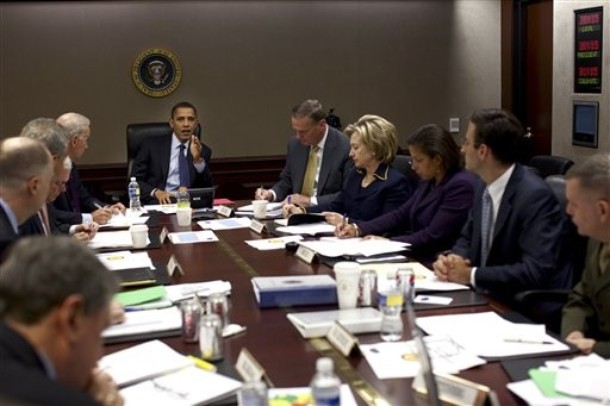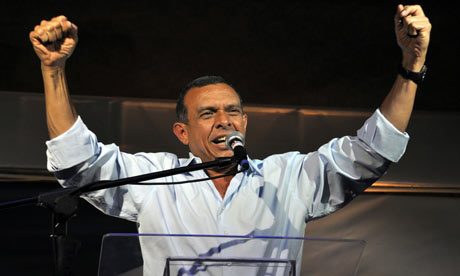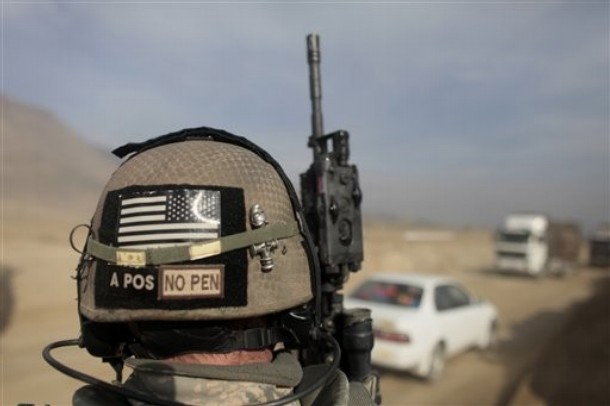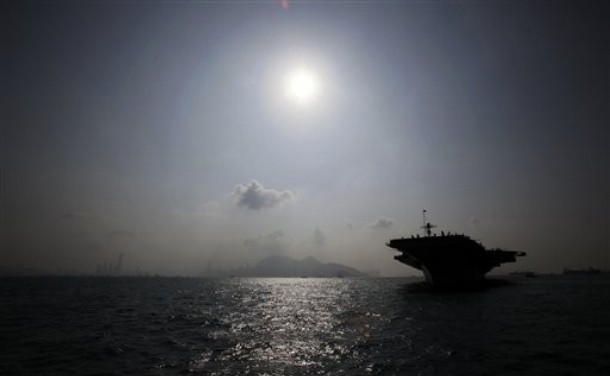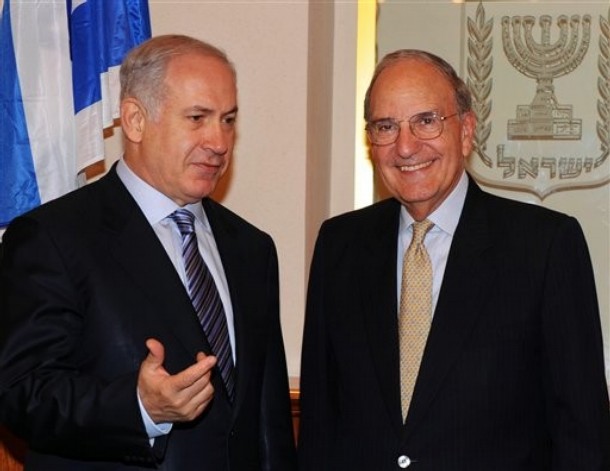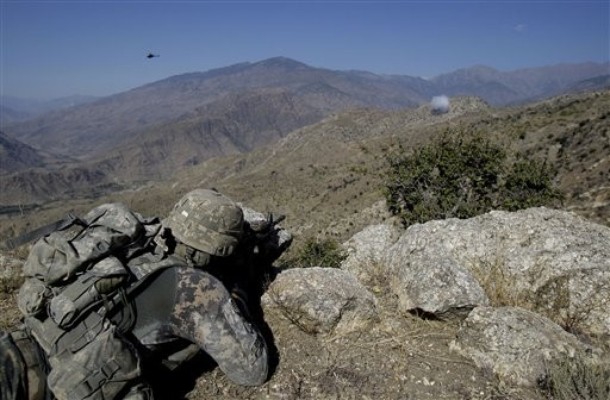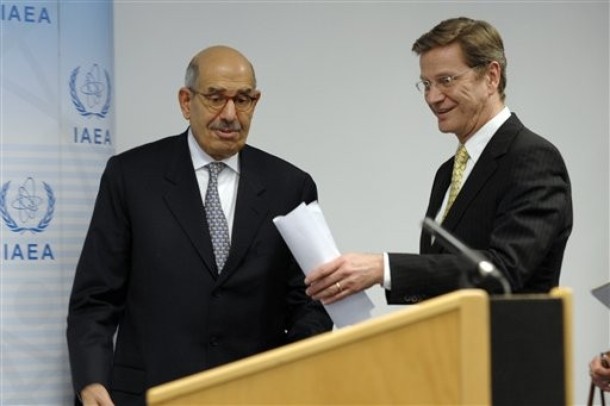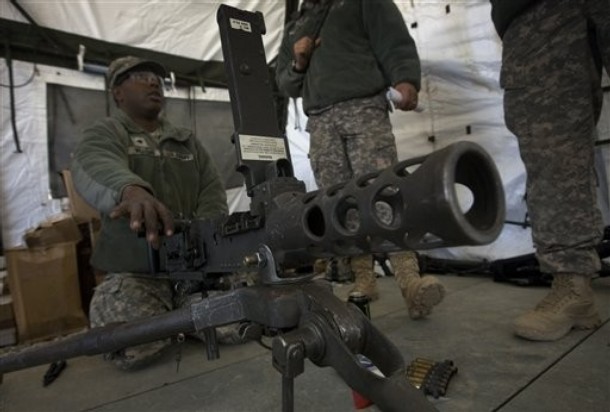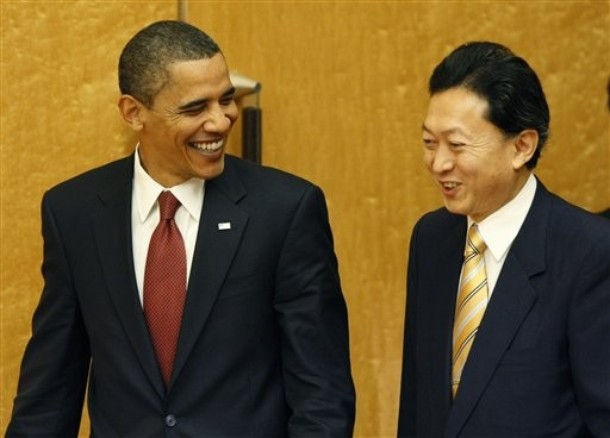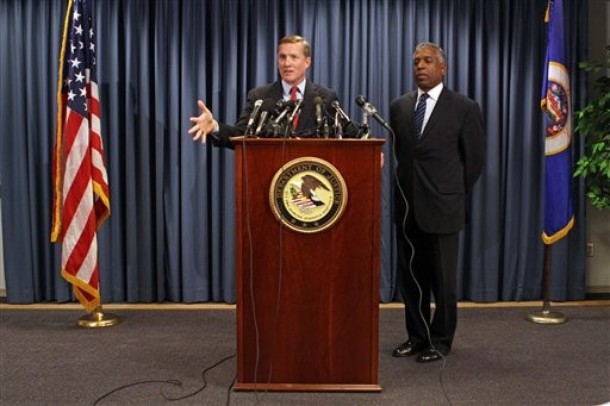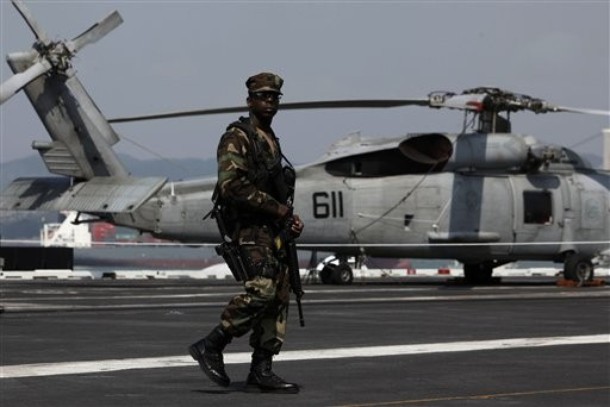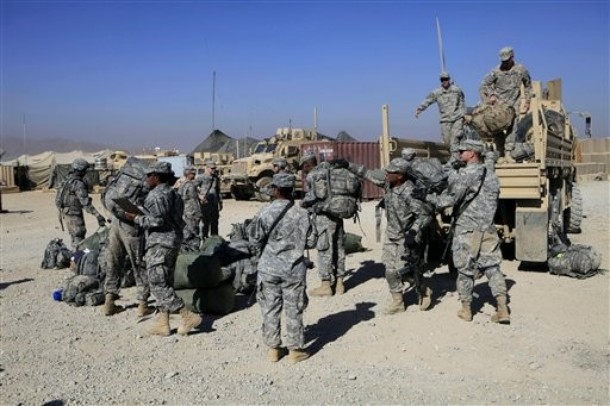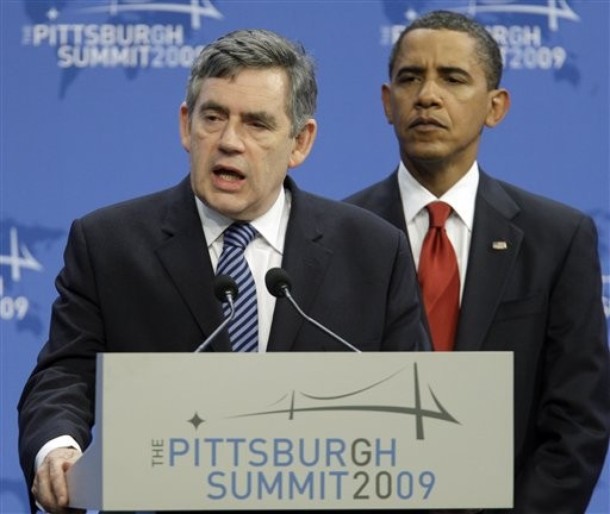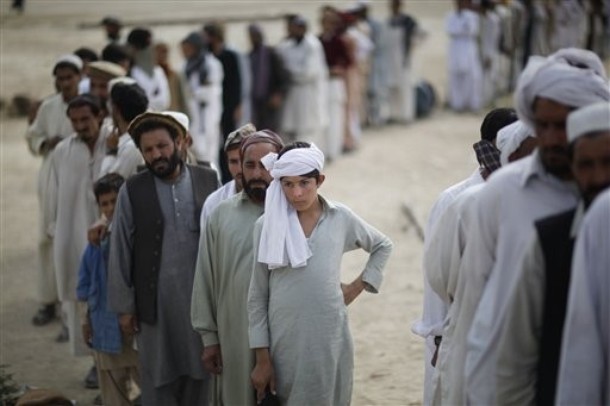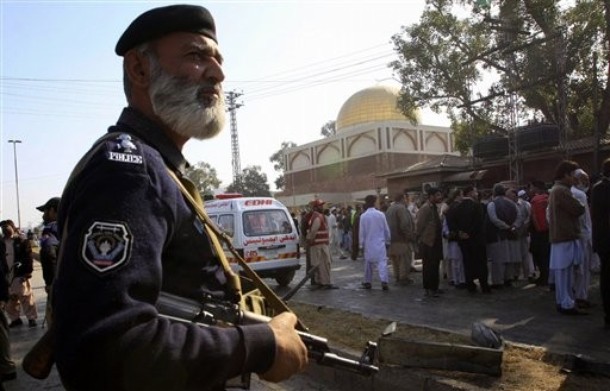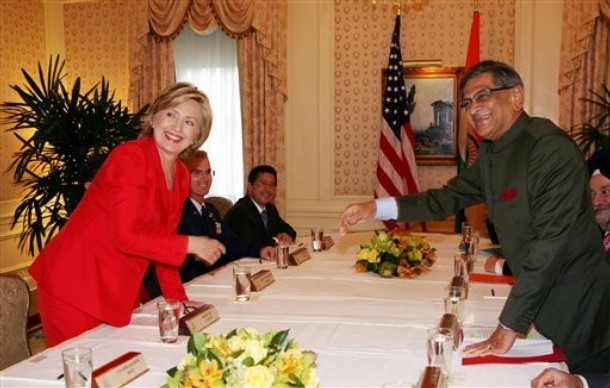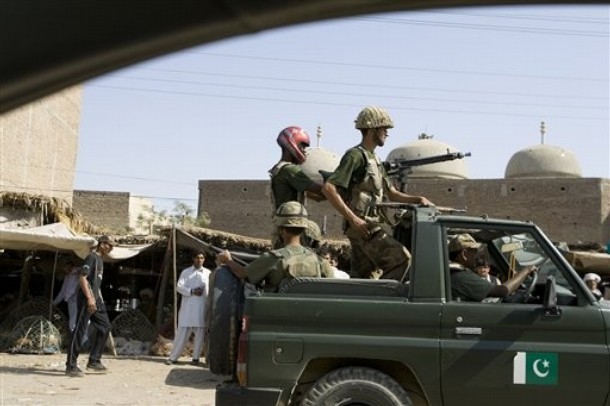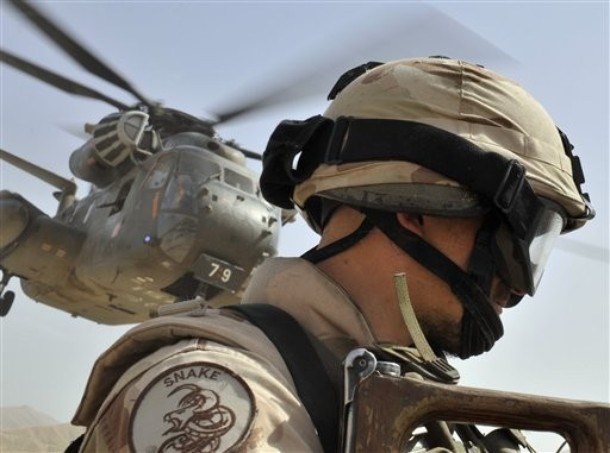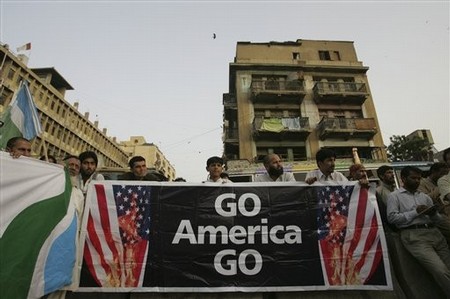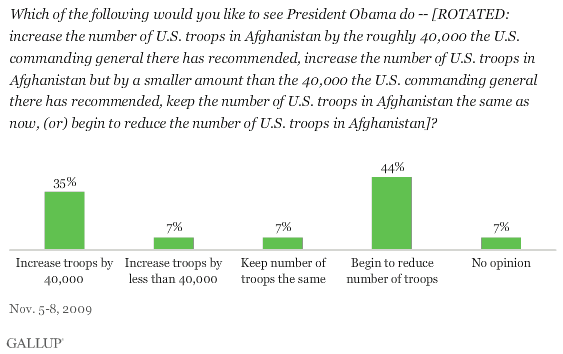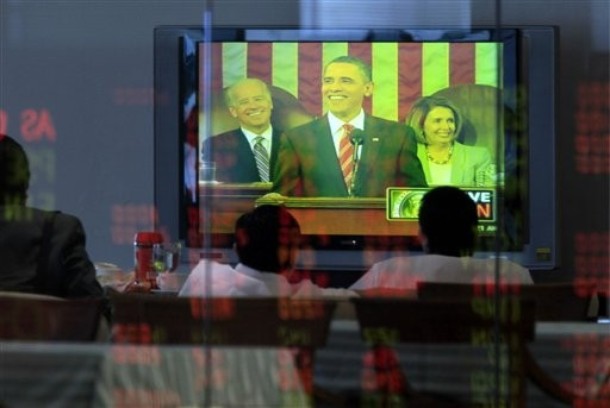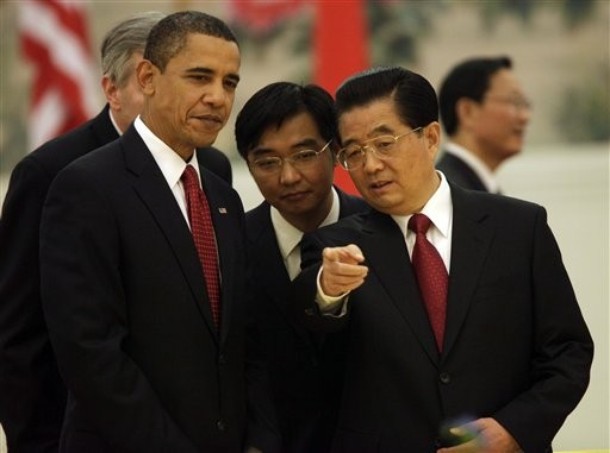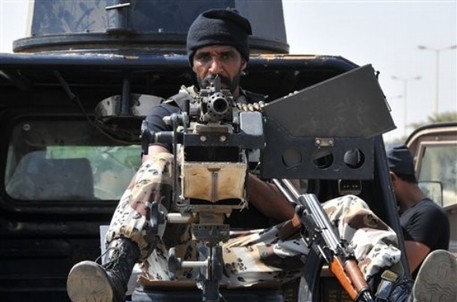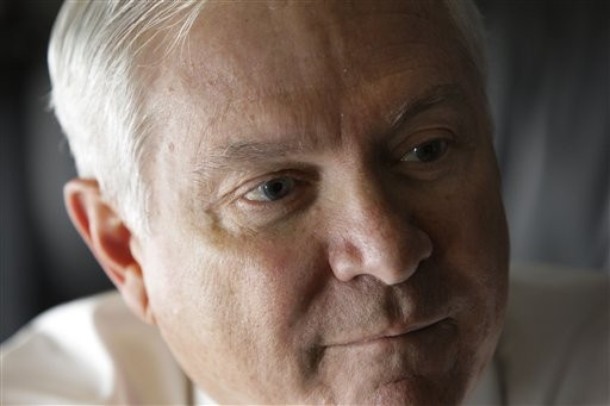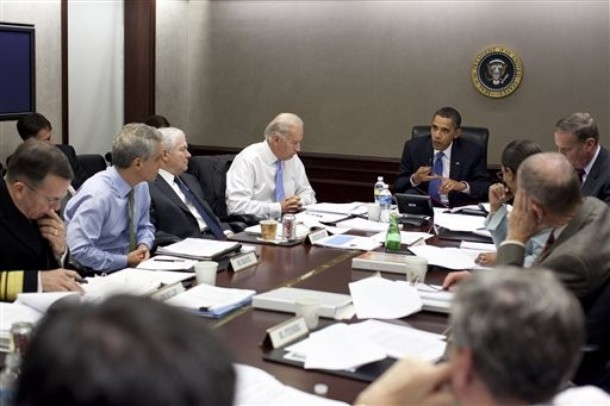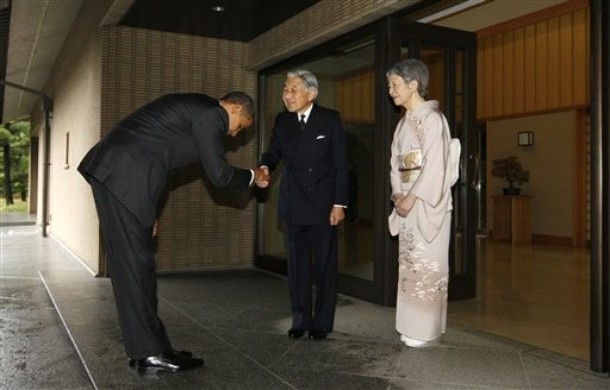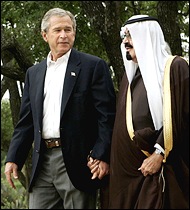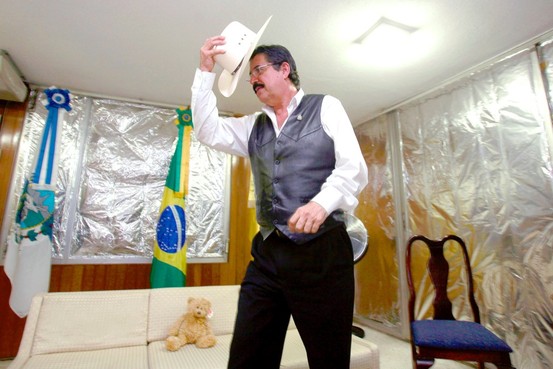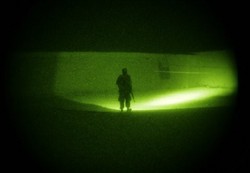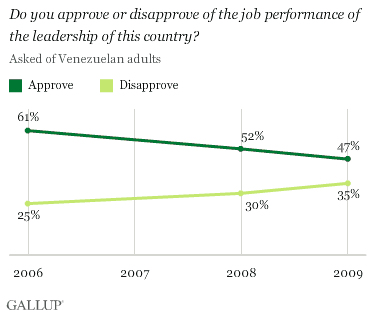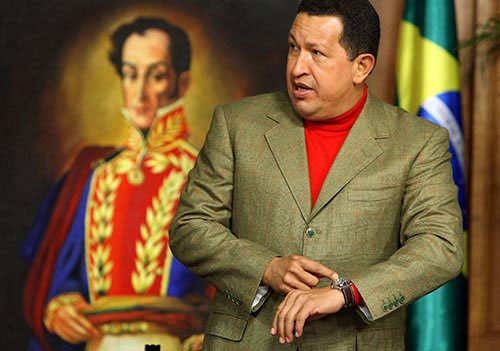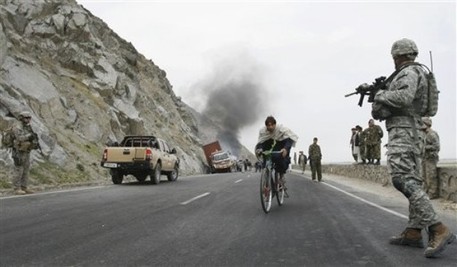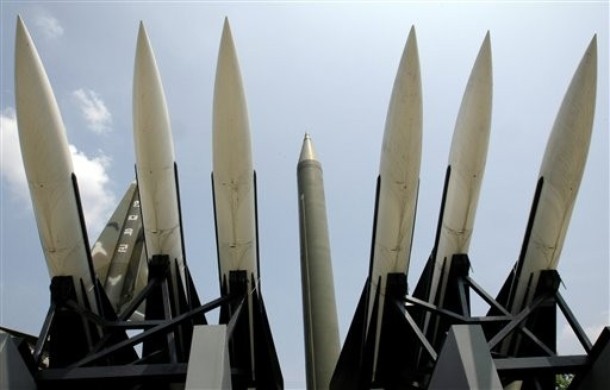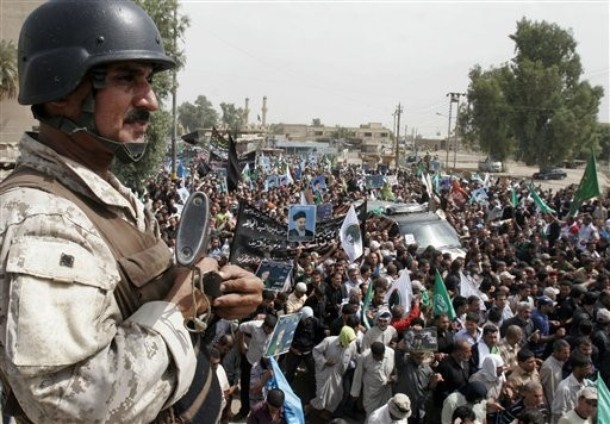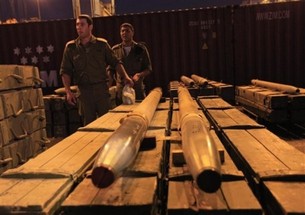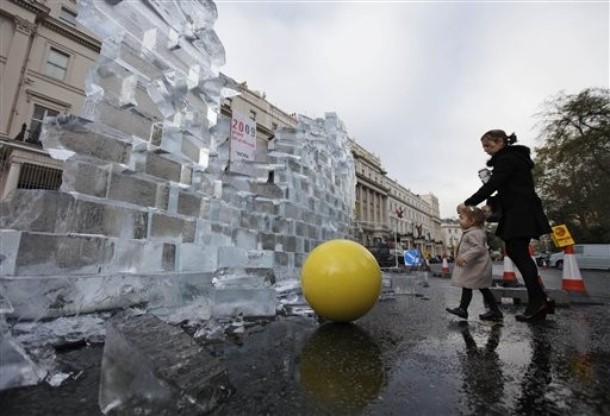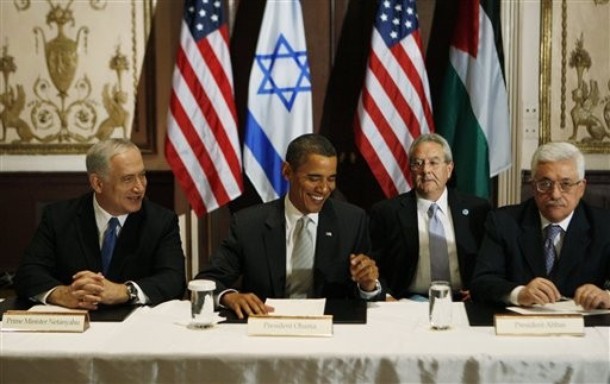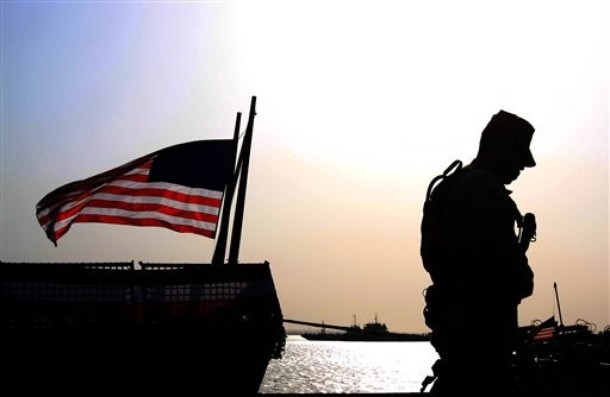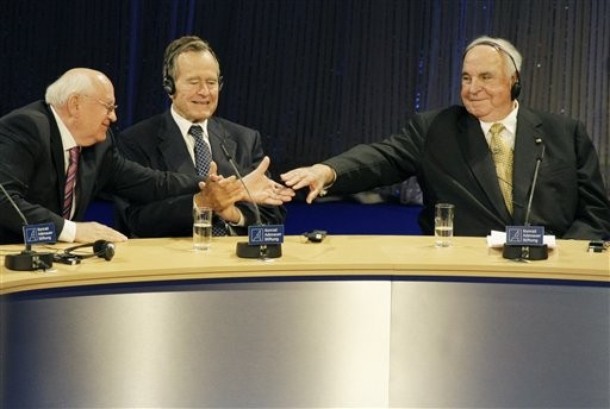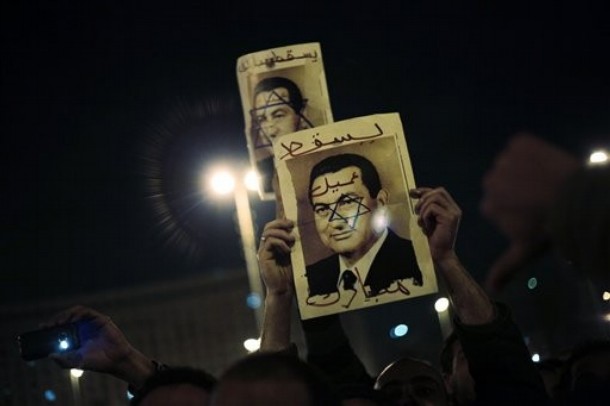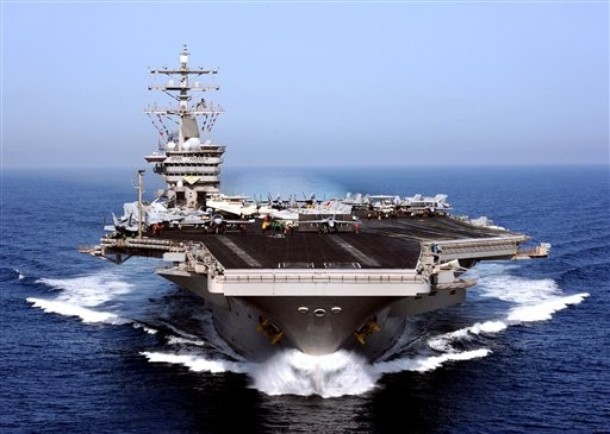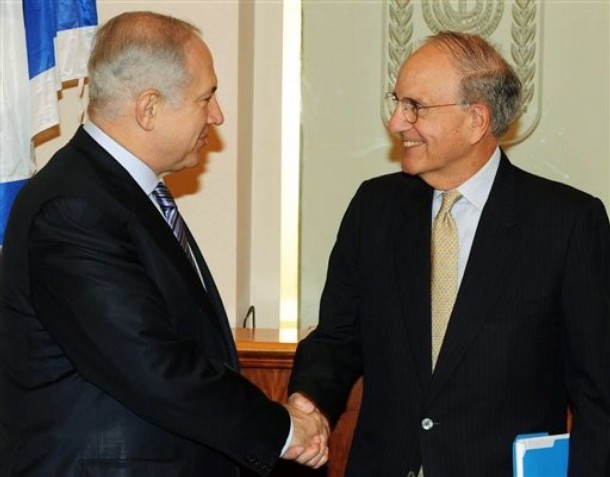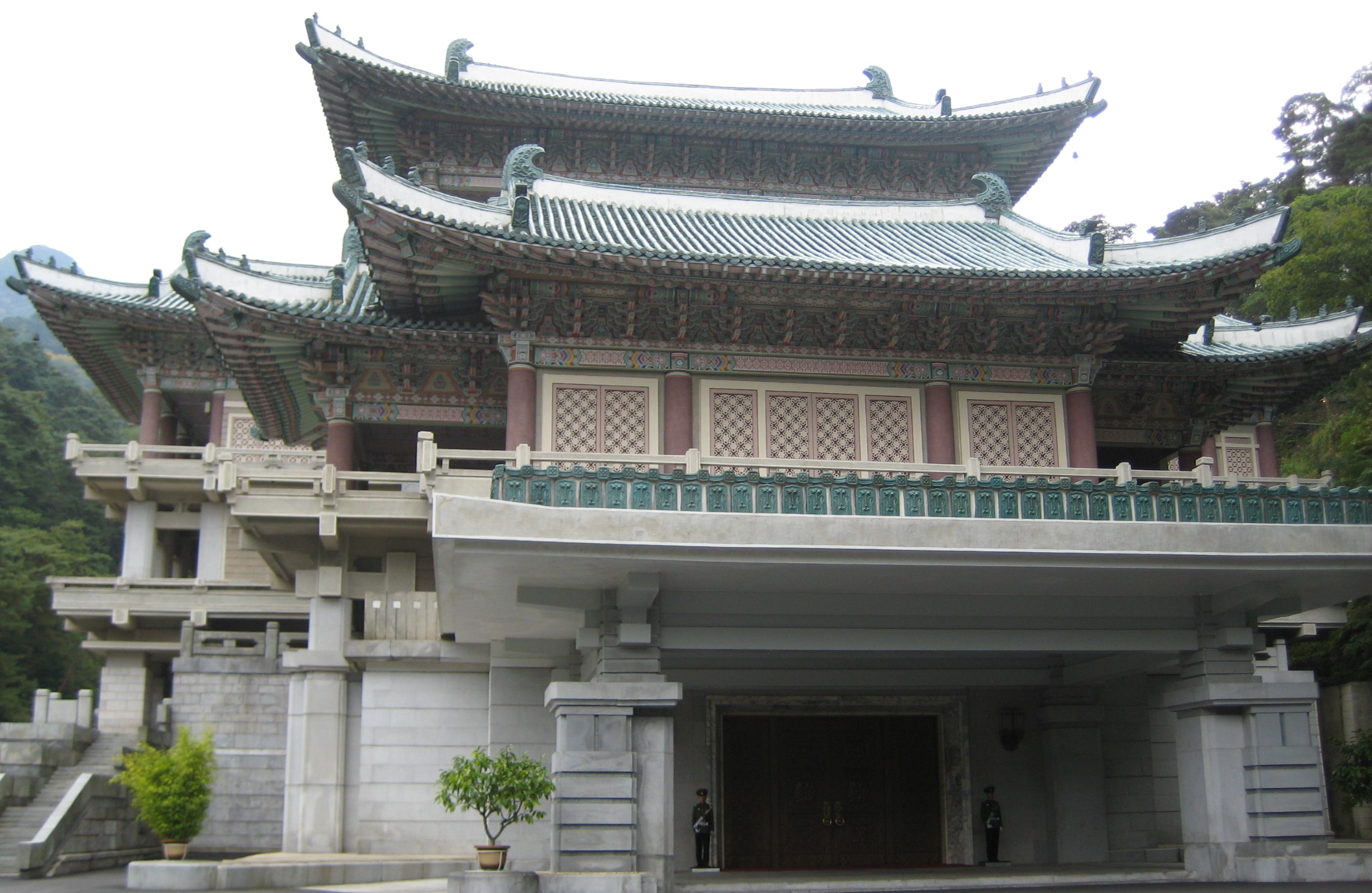
By Patrick Chovanec
(For previous installments, see here)
Even though Kim Il-Sung died in 1994, officially he is still the “Eternal President” of North Korea. So when official visitors call, they are expected to present not one but two gifts, one to Kim Il-Sung and the other to his son, the country’s current ruler, Kim Jong-Il. All of these gifts are reverently collected and displayed in two extensive underground galleries burrowed deep into Mount Myohyang, several hours north of the capital. As tourists, we weren’t expected to offer any gifts, but we were taken to visit this exhibit as part of our one and only overnight trip outside Pyongyang. When I first saw this item on our itinerary, I thought it sounded kind of boring, and maybe you’re thinking the same. Quite the contrary, it turned out to be one of the most bizarre and memorable places I’ve ever visited.
Mt. Myohyang is located in the mountains that dominate the northern half of the DPRK and ultimately rise higher and higher to form a rugged boundary with China. We drove there after sunset, so we couldn’t see a thing along the way, except for a few lights in the distance that one of our minders told me was a Fiat joint venture auto plant. After several hours of unrelenting darkness, we arrived at the Hyangsan Hotel, a pyramid-shaped tourist facility built in 1986. Although it’s described as a “luxury” hotel, it proved to be a lot more spartan than our quarters back in Pyongyang. The beds were hard as boards and there was certainly no BBC, just two channels with poor reception featuring the staple fare of North Korean TV: an army drama on one, women in colorful hanboks (traditional Korean gowns) singing patriotic folks tunes on the other. We soon fell asleep.
The next morning, after breakfast, we had a rare opportunity. For the entire trip, I don’t think I had stepped more than 20 feet from one of our minders, and even that made them nervous. Just outside the hotel’s front door, though, there was a long, straight driveway that stretched maybe 100 feet to meet the main road. At the foot of the driveway there was a small bridge over a rock-strewn stream, which wound its way between two misty hillsides whose trees were just turning autumn red and gold. Local villagers were riding past on bicycles, and every so often a truck would drive by, its open cargo bay filled with North Koreans hitching a ride. Several of us asked whether we could walk down to the road “to take a picture of our hotel” (which qualifies as a “good thing” to take a picture of). Our minders could hardly deny such a flattering request, but watched us warily from, what to them, must have been an uncomfortable distance.
It might seem silly, but it was essential to ask permission. A few months before, a 53-year South Korean woman, a tourist visiting a similar tourist enclave (Mt. Kumgang, along the country’s east coast), woke early and strolled down to the beach by herself to watch the sun rise. She was killed — shot in the back of the head — by a North Korean soldier who must have taken her for a spy. Conflicting reports said she had actually been shot twice, once at point blank range. So you didn’t play games with these folks. You didn’t wander off. “Stay with the group” was more than your typical tour guide’s happy chatter.
Our first visit that morning was to the Pohyonsa Buddhist monastery, a charming collection of ancient temples and pagodas set in a thickly wooded valley. As we admired the elaborately painted panels and roof timbers, and soaked in the serenity of the pristine surroundings, a monk or two stood gazing at us from shadowed doorways. But Pohyonsa, which dates from 1024 AD and was reconstructed in 1979, is more a monument to Korea’s cultural heritage than a functioning religious community. According to official government statistics, more than half of the country’s population are practicing Buddhists, but outside sources place the actual number at barely more than a million, or less than 5%. The cult of Kim is a jealous god, and the real places of holy pilgrimage on Mt. Myohyang are across the valley, on the opposite slope: the father-and-son treasure houses of Kim Il-Sung and Kim Jong-Il, officially known as the International Friendship Exhibition.
The Exhibition is comprised of two separate tunnel complexes carved deep into the mountainside. The entrance to each is a set of large metal doors at the base of an imposing marble pagoda-like structure, which you reach by walking up an asphalt driveway. Unsmiling guards in crisp military uniforms stand at attention outside, holding automatic rifles — otherwise, you might think you had happened upon the garage door of some Asian tycoon’s vacation mansion. The first pavilion we approached belongs to Kim the Elder. The doors rolled open as though someone had spoken the magic word “Open Sesame” at the entrance to Aladdin’s Cave. Once we filed in, they shut behind us with a resounding clang.
Inside, absolutely no photos are permitted. They’re not taking any chances, either: all cameras must be surrendered to the cloakroom immediately upon entering. That’s too bad, too, because one glance at the palatial marble interior told us this would be a place worth taking pictures of. Each “exhibition” is really a vast underground museum, a labyrinth of rooms filled with glass cases containing every doo-dad and gee-gaw the Kims ever collected in their 60+ years of rule. The official tally is 223,500 items from 180 countries, displayed in over 150 rooms. The rooms are arranged by geography, with several countries – such as guilt-ridden Japan – accounting for several chambers. One great hall is devoted entirely to gifts the Elder Kim received from fellow dictators: medals and plaques given by Idi Amin, Fidel Castro, Robert Mugabe, and Nicolae Ceauşescu, all comrades in a sort of mutual admiration society.
When I say every doo-dad, I mean it. Some gifts are huge, like the bullet-proof limousines and railway cars sent by Joseph Stalin. By most are tiny, the size of a small clock or sports trophy, and reading the inscriptions often proved a surprising source of amusement. One item was from the Communist Party of San Marino (a tiny country of 30,000 people), which can’t be comprised of more than a dozen or so regulars. But that’s the big leagues compared to the “Study Group of Kim Il-Sungism for Latin Americans in Scandinavia” or a similar Kim fan club catering to Nigerians in New York City – truly, I kid you not. And you have to figure, these guys are probably the ones who splintered off from the original Kim Il-Sungism study group because it didn’t meet their standards of ideological purity.
Regardless, the North Koreans are pretty wowed by it all. Like Kim Il-Sung’s mausoleum, the gift exhibition is part of the indoctrination circuit; every work unit in the country is regularly cycled through. In their eyes, the seemingly infinite collection of treasures and awards is testament to the adulation the entire world feels for the Great Leader and his son, the Dear Leader. Nowhere was the gap between their perception and ours more evident than in the rooms devoted to gifts from South Korea.
In recent years, a number of South Korean business leaders have courted the Kims in the hope that, under their country’s “Sunshine Policy” of engagement with the North, they might be allowed to sell their goods or open a factory in the DPRK. As a matter of course, they sent samples of the products their companies make, which duly ended up on display in the International Friendship Exhibition. Entire bedroom sets from South Korean furniture manufacturers are set up on pedestals beside widescreen TVs, as though they were valuable works of art. Slightly outdated MP3 players, laser printers, and computer monitors lie protected in glass cases like precious relics of some lost civilization. But what looked to us like used belongings at a garage sale appeared to the North Koreans – who had never seen such things – like the world’s most marvelous technology laid out as tribute to the Great Leader. Their jaws dropped and their faces grew puzzled as they pressed noses against the glass between them and a dusty old VCR. Who could imagine such wonders? Who could inspire them but the Great Leader?
But as odd as that felt, something much weirder was about to unfold. We had nearly completed our tour of the Elder Kim’s treasure chambers when our resident guide, a middle-aged women in a bright hanbok gown, rather urgently directed us to line up in formation in front of a large wooden door. Her tone grew hushed and excited, and it was hard to decipher exactly what she was saying, except that behind the door was an “image” of the Great Leader that had been donated from Japan. It was so lifelike, she blurted, that it was almost like standing in the presence of the man himself. Many people, she said, experienced almost a religious experience upon viewing it. One Japanese girl fainted, she said, and later reported “it was almost like the Great Leader was entering my mind.” Before we could figure out what to make of all this, the door opened and we were ushered inside.
The room was bare and its lights dim. Along the wall opposite the door stood a smiling, life-size wax statue of Kim Il-Sung – the same kind you’d find at Madame Tussaud’s – his hand raised in greeting. With great solemnity, the guides motioned for us to line up in three rows facing him, arms neatly at our sides. I glanced to my side and caught the eye of one of my companions. From the look on her face I could tell she was thinking the same thing I was: We have just entered the Twilight Zone. I literally had to bite down hard on my lip to keep from breaking out laughing, as we bowed deeply in unison to this earthly avatar of the Great Leader. At Kim’s mausoleum, I found the idea of bowing upsetting and ultimately balked at it. This time, the whole situation was so surreal it seemed mad to take it seriously. I briefly considered falling to the floor in a fit and speaking in tongues – the Great Leader has entered my brain! – but doubted whether I could carry it off.
At this point I half expected them to hand us the kool-aid. Emerging from our face-to-face encounter with … whatever that was … we looked at each other with stunned expressions, words entirely failing us. The rest of the tour, including our visit to the Younger Kim’s underground display, passed in a haze. We saw the basketball signed by Michael Jordan that US Secretary of State Madeline Albright brought with her on her historic visit to Pyongyang, as well as a gun presented by Russian leader Vladimir Putin, both enshrined like holy relics before a gigantic – and rather flattering – gleaming white statue of Kim Jong-Il seated on a throne. I’m told there is also a standing stuffed crocodile presenting a tray of cups, courtesy of the Sandinistas, and some silver coconuts from Saddam Hussein, but by then it was all just a blur.
Soon they were loading us back on the bus, and it was time to head back to Pyongyang. This time it was still light out, and I stared out the window in a haze as we drove back along a shallow, winding river with gravel banks. Suddenly I realize that this was the Chongchon River valley. Our guides certainly weren’t going to point it out, but for any American with an interest in military history, this was hallowed ground. It was here, in November 1950, that Chinese forces that had secretly crossed the Yalu River surprised and almost totally destroyed the entire Eighth U.S. Army. Four whole U.S. divisions plus accompanying allied troops were (just barely) saved from complete annihilation by the heroic holding actions of the Turkish Brigade, but the army was broken. Defeat turned into a headlong, chaotic flight – the longest retreat of any American military unit in history. In 19 days of fighting, nearly 12,000 U.S. soldiers were killed, wounded or missing, not including 22,000 more crippled by frostbite or frozen feet. The army’s commanding general, General Walker, was killed when his jeep crashed along the road back to Seoul. All hopes of achieving a quick victory in Korea – which had seemed all but certain before the disaster – were dashed. The war was to drag on as a bloody stalemate for two and half more years, and even now has not officially ended.
We were probably among just a handful of Americans who had passed this way ever since. I bowed my head — for real this time – and thought about the more than 8,000 Americans, and countless others, still counted as missing from the war. Many of them, no doubt, still lay here, among the quiet forested hills and meandering streams. We couldn’t visit them, or pay our respects, but we could remember them.
As the road leading back to Pyongyang left the mountains and reentered the plains, I spotted a train forlornly chugging its way through the empty fields, under slate grey skies. It was pulling empty tank cars back to China, to be filled with oil. This is the lifeline, the slender thread of support that keeps North Korea going. It seemed, at that moment, like a phantom crossing a landscape of ghosts, a land where the past still haunts the present, ruled by remote and terrible gods.
----
Patrick Chovanec is a professor at Tsinghua University's School of Economics and Management in Beijing, China. He blogs at http://chovanec.wordpress.com/

